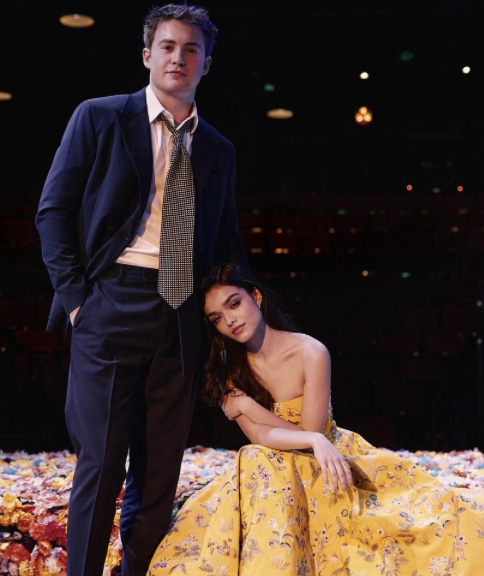
The classic William Shakespeare play “Romeo and Juliet” has countless adaptations — does there really need to be a new take on the 400-year-old tragedy? Directed by Tony-Award-winning Sam Gold, known for his work on other Shakespearean productions such as “King Lear” and “Macbeth,” “Romeo + Juliet” stars actors Kit Connor and Rachel Zegler as the titular star-crossed lovers. The play is staged at the Circle in the Square Theater in New York City and is only in production until mid-February.
With a tagline of “The Youth are F**ked,” Gold aims to create a quirky, edgy Gen Z adaptation of “Romeo and Juliet,” trying to connect the play with a younger audience. For the most part, he succeeds in his vision. However, some moments felt as though Gold was trying too hard to appeal to a younger generation, making the production feel like an older, outsider’s imagined version of Gen Z culture rather than an authentic representation.
The staging of the production sets this play apart from many others on Broadway. The seating surrounds the stage, which sits in the center of the theater. While the set design is limited, the stage does not restrict the action of the show. The characters move dynamically through the theater, running up and down the aisles and shuffling along the catwalks above the stage. If you are getting tickets, try to pick seats on or close to the aisle because these seats bring you closer to the action. The unconventional use of the venue makes the experience more immersive and lively without taking too much attention away from the central drama. The audience transforms into the citizens of Verona, swept up in the unfolding tragedy. Yet, there lies a sense of inevitability. The audience knows how the tragedy will end and, as the actors race around the theater, the audience gets drawn into the plot while knowing they are powerless in changing the outcome.
This production was made for those who already understand the basic plot of “Romeo and Juliet.” Leaflets are handed out before the show that outline the connections each of the supporting characters has with the two leads. However, going into the play, the audience would find having some knowledge of the plot helpful because a lot happens on and off the stage simultaneously, which could distract first-time viewers. Luckily for Gold, “Romeo and Juliet” has been around for over 400 years, and by now almost everyone knows the plot of this tragedy, so he can get away with complex staging that might be too distracting in another production.
“Romeo + Juliet” is not a musical, but a play set to music. Written by Grammy-Award-winning producer Jack Antonoff, the pulsing techno music amplifies the intensity of the play while continuing the modern feel. There are a few songs added where the characters sing. These are some of the only moments of the show where the characters move out of iambic pentameter and use more modern language. The songs were clearly added to showcase Zegler’s incredible voice, but do not add much else to the plot and emotional depth of the story.
The majority of the supporting actors are cast in two to three different roles. The best use of the triple casting was Gabby Beans as Mercutio, Friar Lawrence and the Prince. Beans distinguishes the characters well so the audience can easily tell which character she plays. The double and triple casting never becomes too confusing, although there were some points where it was not immediately clear which character the actor was portraying. Luckily, acting choices as well as the use of different clothing for the characters helped differentiate them. The supporting cast does a great job in their respective roles, bringing energy and nuance to the production.
Connor and Zegler are phenomenal in the titular roles. Both actors are young, adding a layer of vulnerability to their performances while also connecting back to the source material, where Juliet is 13 and Romeo is 16. Connor fully immerses himself into his portrayal of Romeo, capturing the intense passion and naivety of a lovesick young man. Zegler’s performance is more subtle than Connor’s, but is still brilliant. While Romeo runs up and down the theater aisles proudly professing his love for Juliet, Zegler captures Juliet’s more cautious and level-headed nature. The two actors easily convince you that the characters fell in love after meeting once at a party.
Despite minor flaws, “Romeo + Juliet” is absolutely worth seeing. The play draws you in through the innovative use of the theater as well as the spectacular performances from all of the actors. Although you enter the theater knowing exactly how the classic tragedy ends, when the final scenes happen, you find yourself wanting to leap out of your seat and stop Romeo from drinking the vial of poison, wishing to change the outcome. But no such luck; the tragic fate of the two star-crossed lovers is as heartbreaking today as it was in 1597. Sam Gold beautifully adapts “Romeo and Juliet,” remaining faithful to Shakespeare’s work while also adjusting the play to connect with today’s youth.









































































































































































































